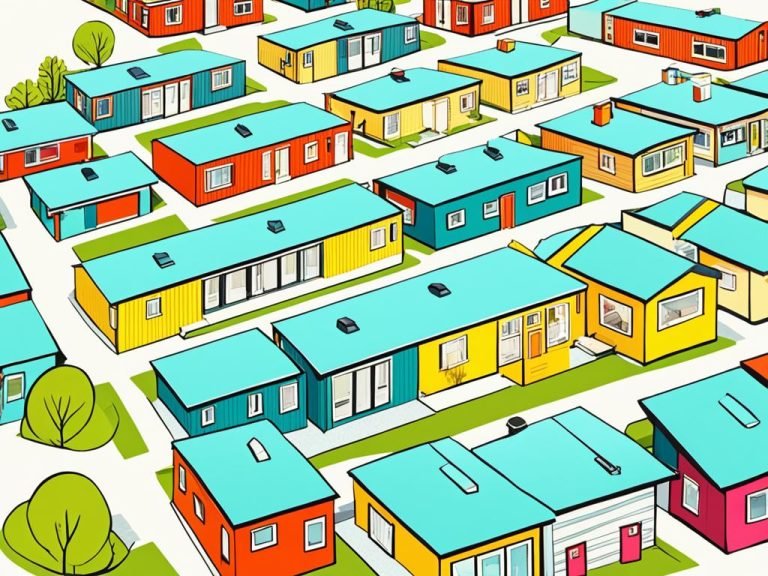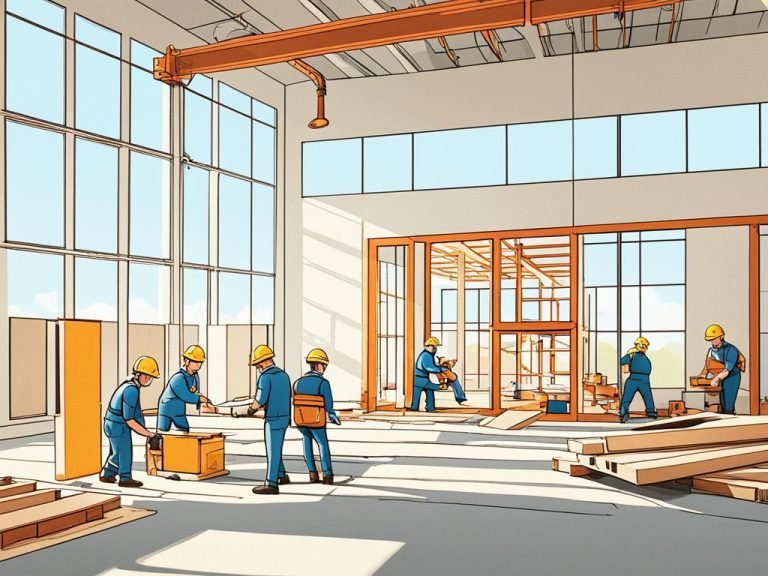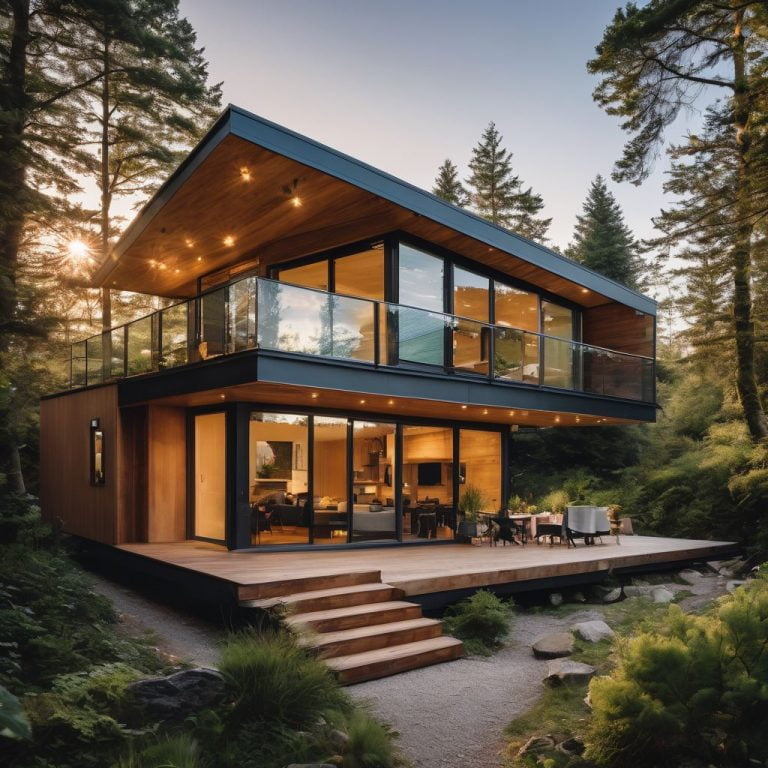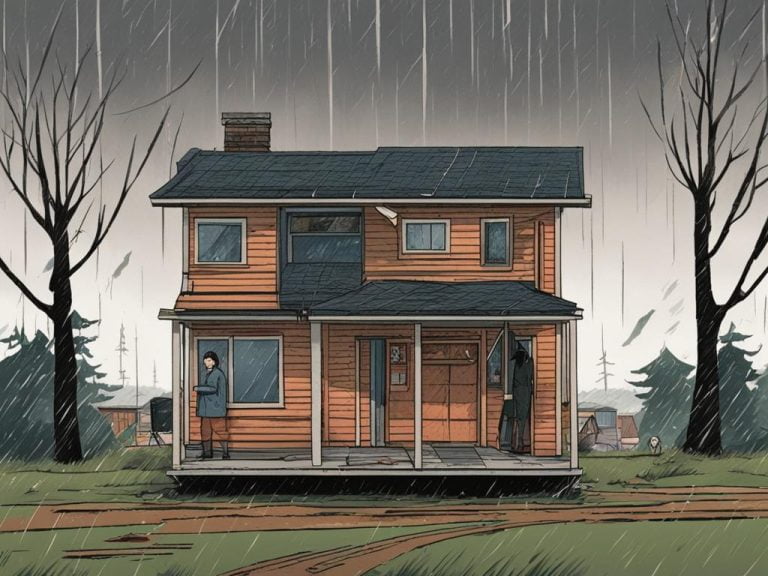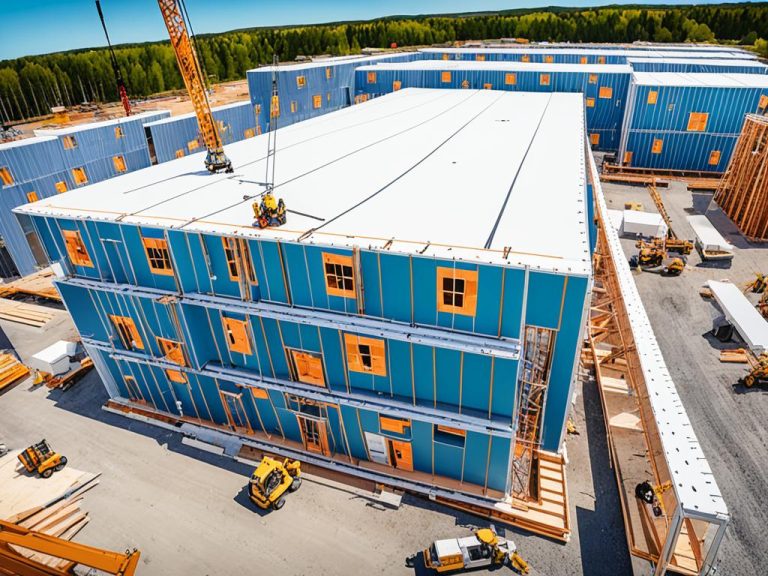Modular Homes Safety in Storms – Insights from the USA
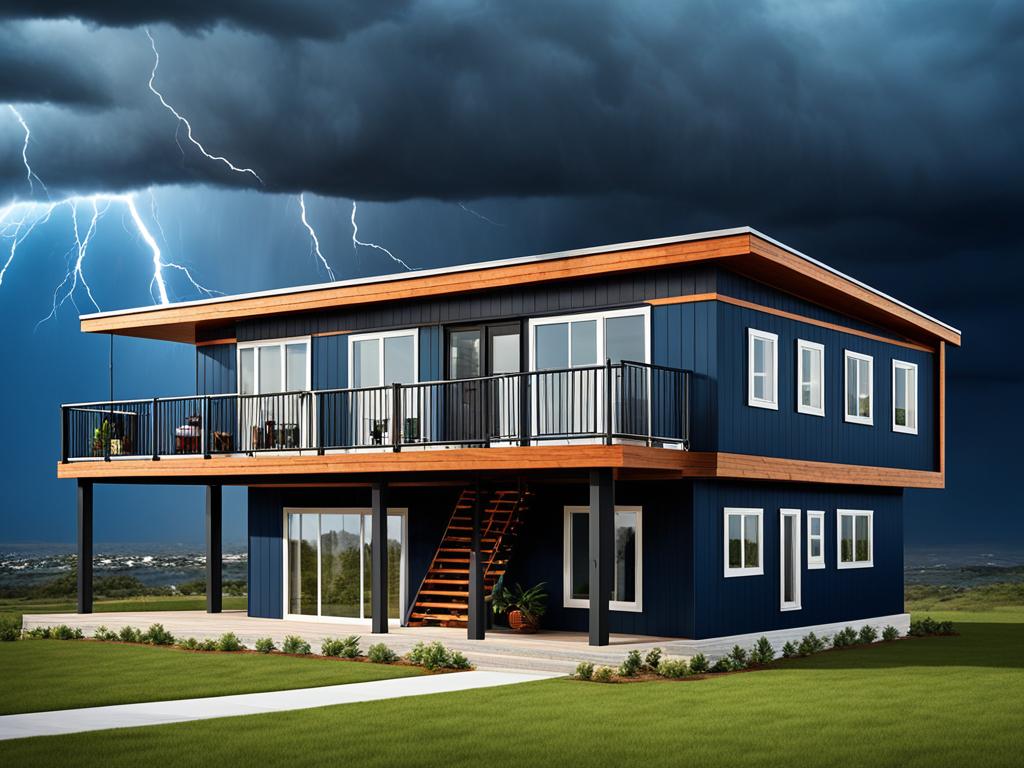
Modular homes have become increasingly popular in recent years, offering a cost-effective and customizable housing solution. However, concerns have been raised about their safety in storms. As extreme weather events become more frequent and severe, it is crucial to understand the durability and resilience of modular homes when faced with hurricanes, tornadoes, and other forms of extreme weather.
When it comes to stormproof modular homes, several factors come into play. From the construction materials to the building standards and location, every aspect contributes to the overall safety and security of these dwellings. Let’s delve deeper into the subject to dispel any misconceptions and shed light on the measures taken to ensure the safety of modular homes during extreme weather conditions.
Key Takeaways:
- Stormproof modular homes offer a safe and secure housing option in extreme weather conditions.
- Building standards and regulations ensure that modular homes meet rigorous safety requirements.
- Factors such as foundation type and location play a significant role in storm preparedness.
- Proper anchoring and attachments are crucial for the stability of modular homes during storms.
- Staying informed and having a disaster preparedness plan are essential for residents of modular homes.
Understanding Manufactured Home Safety Measures
Manufactured homes, also known as mobile homes, prioritize the safety of their residents by implementing specific storm safety measures. These homes are equipped with built-in safety features and comply with stringent building standards and safety regulations.
One of the important aspects of manufactured home safety is the identification of safe shelter spaces within the home. These spaces provide residents with a secure area to take refuge during severe weather events. Additionally, knowing evacuation routes is crucial to ensure a timely and safe evacuation when necessary.
In terms of structural integrity, manufactured homes are designed to withstand wind speeds of up to 100 miles per hour in designated wind zones. They are built with durable materials and techniques that enhance their wind resistance capabilities, ensuring the safety of the occupants inside.
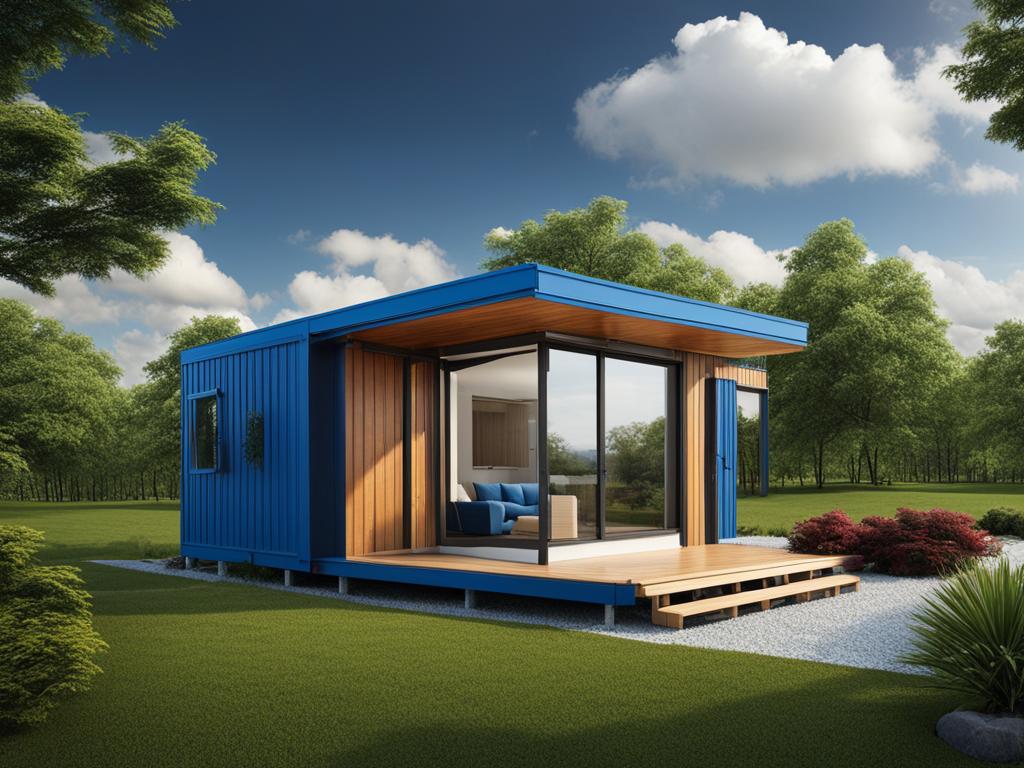
Compliance with building standards and safety regulations is imperative to guarantee that manufactured homes are on par with site-built homes. These standards focus on the strength and stability of the structure, ensuring that the home can withstand the forces of nature and protect its occupants.
By implementing these storm safety measures, manufactured homes offer a safe and secure living environment for residents, giving them peace of mind during extreme weather conditions.
Factors Affecting Modular Home Safety
The safety of modular homes can be influenced by various factors. Older homes that were not built to current hurricane standards may be more vulnerable to storm damage. Building standards have significantly improved since the 1970s, with stricter regulations for wind resistance. The type of foundation and the presence of proper anchoring systems also play a role in ensuring the safety of modular homes during storms.
Age of Modular Homes
Modular homes that were constructed many years ago may not meet the current standards for withstanding extreme weather conditions. As building codes and requirements have evolved, newer homes are designed to be more resilient and able to withstand high wind speeds and storm forces.
Building Standards
Over the years, building standards and regulations for modular homes have improved significantly. Stricter guidelines for wind resistance ensure that newer homes are better equipped to withstand storms. These standards are continuously updated to enhance the safety and durability of modular homes in adverse weather conditions.
Foundation Types
The type of foundation plays a crucial role in the structural integrity of a modular home during storms. A solid and well-designed foundation provides stability and helps distribute the load evenly. Homes with permanent foundations, such as concrete slabs or pier and beam systems, are generally more secure than those with temporary or inadequate foundations.
Anchoring Systems
Proper anchoring systems are essential for securing modular homes during storms. Anchors, such as straps or tie-downs, help prevent the home from shifting or lifting during high winds. The use of sturdy anchors and the employment of professional installation techniques ensure that the home remains securely in place, reducing the risk of damage or displacement.
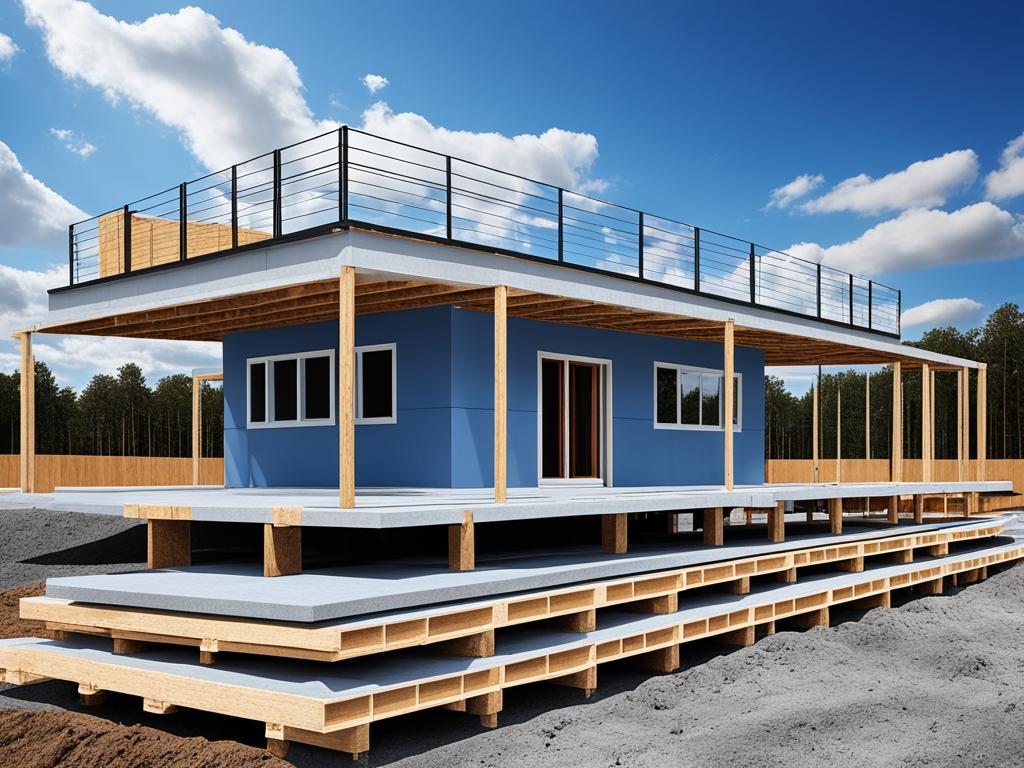
Myth vs. Reality: Debunking Stereotypes
There is a common misconception that mobile homes are inherently less safe in storms. However, advancements in construction techniques and materials have made modern manufactured homes as sturdy and disaster-resistant as traditional homes. Stricter standards set by the U.S. Department of Housing and Urban Development (HUD) ensure that manufactured homes are built to withstand the forces of nature.
Contrary to the stereotypes perpetuated in movies and media, mobile homes have undergone significant safety improvements over the years. Gone are the days when these structures were seen as flimsy and susceptible to damage. The reality is that mobile homes today are designed and constructed with the utmost consideration for their resilience in the face of extreme weather conditions.
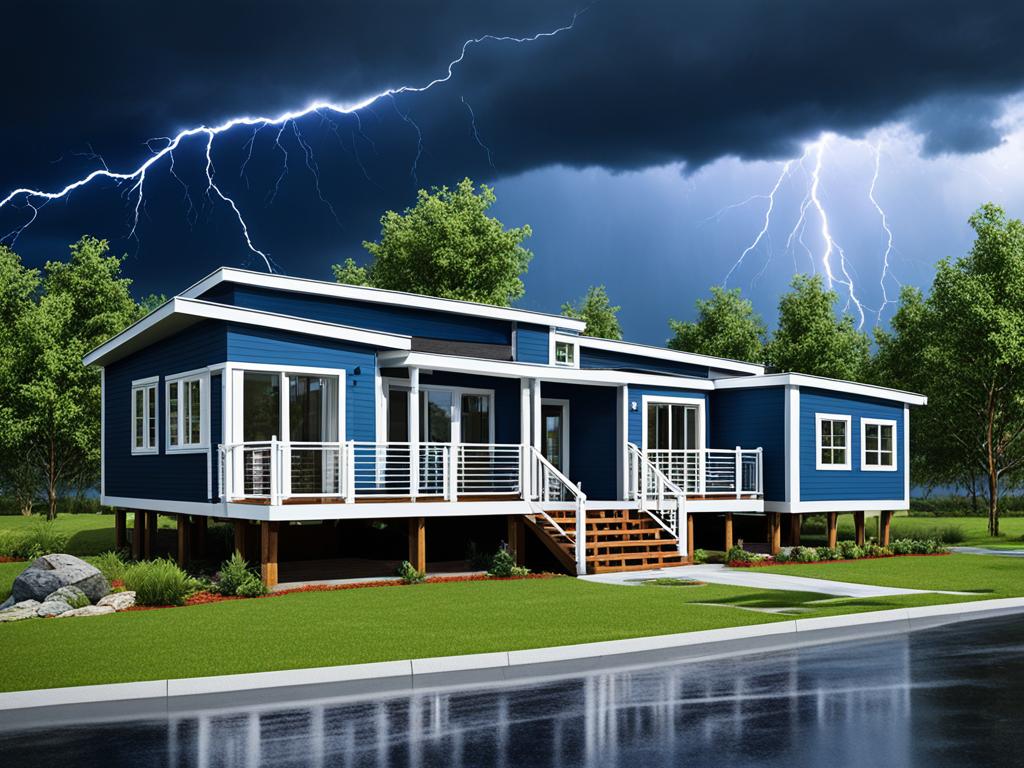
Advancements in Construction Techniques and Materials
Manufactured homes now incorporate state-of-the-art construction techniques and high-quality materials to enhance their disaster resistance. These include reinforced roofs, impact-resistant windows, and durable siding that can withstand strong winds and flying debris. The use of advanced structural engineering principles ensures the integrity of the homes, making them capable of withstanding the forces exerted by storms.
Stricter Standards and Building Regulations
Regulatory bodies, such as HUD, have implemented stricter building standards for manufactured homes to improve their safety and durability. These standards cover various aspects, including wind resistance, structural integrity, and installation requirements. Manufacturers must adhere to these regulations to ensure that each home meets the necessary criteria for disaster resistance.
Continuous Safety Enhancements
The modular home industry is committed to ongoing research and development, continually seeking new ways to enhance safety and resilience. This dedication has resulted in innovative solutions, such as improved anchoring systems and advanced weatherproofing techniques, which further bolster the disaster resistance of mobile homes.
In conclusion, the notion that mobile homes are inherently unsafe in storms is a misconception that doesn’t align with the reality of modern manufacturing practices and safety standards. These homes are built to withstand the forces of nature, providing homeowners with secure and reliable shelter. By debunking these stereotypes, we can appreciate the safety improvements that have made mobile homes a viable and resilient housing option.
The Importance of Proper Anchoring and Attachments
Proper anchoring and secure attachments are crucial for the safety of mobile homes during storms. When it comes to mobile home anchoring, the standards have come a long way since the devastating impact of Hurricane Andrew in 1992. In the aftermath of the storm, it was evident that stronger measures were needed to ensure the stability and wind resistance of mobile homes.
Today, mobile homes are equipped with over-the-top straps that provide additional support and secure the homes to the ground. These straps play a significant role in preventing the homes from being lifted by strong winds during a storm. They are installed over the roof and connected to the ground anchors, creating a strong and reliable mobile home anchoring system.
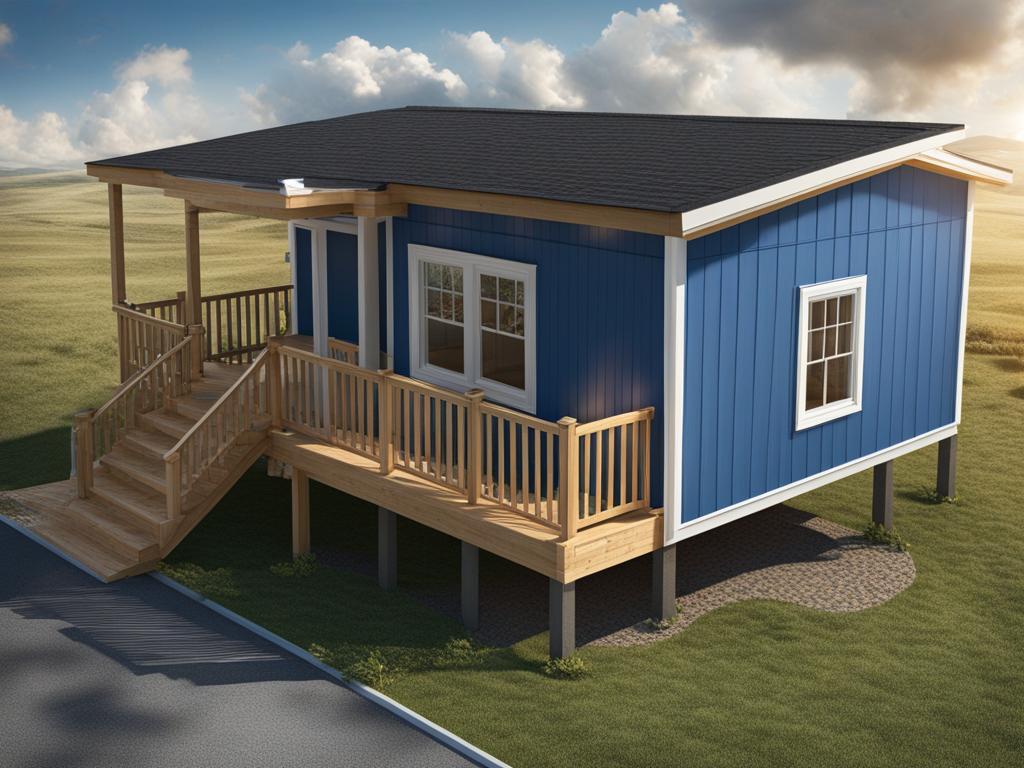
Attachments like awnings and garages also need to be taken into consideration for the overall safety and stability of the mobile home. It’s essential to ensure that these attachments are constructed in compliance with the stringent building requirements. By adhering to these regulations, we can avoid potential roof damage and structural failures during severe weather conditions.
Focusing on Attachment Safety
When it comes to attachments, it’s crucial to prioritize safety. A properly attached and secure awning can provide shade and protection to the mobile home, but if it is not securely fastened, it can become a hazard during high winds. Similarly, garages should be built with wind resistance in mind, using materials and construction techniques that can withstand extreme weather events.
By customising and fortifying attachments, we can enhance the overall wind resistance and roof stability of the mobile homes. Not only does this protect the homes’ structural integrity, but it also safeguards the residents inside from potential harm.
- Secure awnings and garages
- Enhanced wind resistance
- Improved roof stability
When it comes to mobile home safety during storms, proper anchoring and secure attachments are fundamental. By investing in robust mobile home anchoring systems and constructing attachments with safety regulations in mind, we can ensure the well-being and security of residents, even in the face of severe weather conditions.
Statistics on Mobile Home Safety
Studies have shown that mobile homes are more susceptible to storm-related deaths compared to conventional homes. Between 7% and 10% of homes in the United Kingdom are mobile homes, yet they accounted for 42% of storm-related deaths. These statistics highlight the importance of taking precautions and seeking safer shelter options during severe weather events.
During tornadoes and other disasters, mobile homes pose a higher risk of fatalities. Their lightweight construction and limited structural strength make them more vulnerable to the powerful forces of nature. In contrast, conventional homes provide more stability and protection, reducing the likelihood of fatalities.
It is crucial for individuals living in mobile homes to understand the potential dangers and take appropriate measures to ensure their safety during severe weather. Seeking shelter in designated safe areas such as storm shelters or reinforced structures can significantly reduce the risk of harm or fatalities.
These statistics serve as a reminder of the importance of disaster preparedness and the need for continued efforts to improve the safety of mobile homes. By raising awareness, implementing stricter building standards, and promoting education on storm safety, we can work towards reducing disaster fatalities and creating a safer living environment for all.
The Role of Foundation and Location
The safety of a modular home during storms is influenced by the type of foundation and its location. Permanent foundations provide greater security, particularly in tornado-prone areas, where basements offer additional protection.
Coastal areas have specific building codes and wind zones that necessitate higher wind resistance standards for manufactured homes. These regulations ensure that homes in coastal regions are constructed to withstand the powerful forces of wind and storms.
When building a modular home, it is essential to consider the foundation and location in order to maximize its safety and resilience in the face of extreme weather conditions.
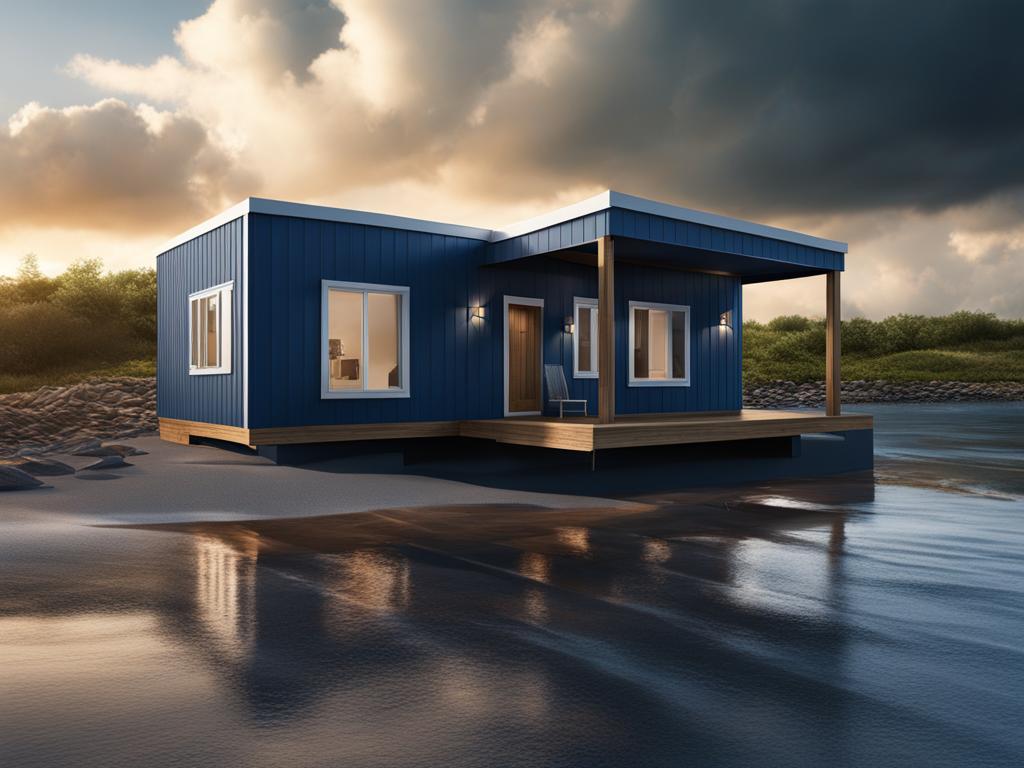
Conclusion
With the right precautions and adherence to building standards, modular homes can offer a safe and resilient living environment in the face of storms. Factors such as the age of the home, foundation type, anchoring systems, and location all contribute to the overall safety of these homes.
Homeowners need to stay informed about severe weather conditions, have a comprehensive disaster preparedness plan in place, and seek shelter in designated safe spaces when storms approach. By taking these measures, residents can minimize the risk of injury and property damage during extreme weather events.
Modular homes have come a long way in terms of safety improvements. Stricter regulations and advancements in construction techniques have made them as sturdy and disaster-resistant as traditional homes. It is essential for homeowners to prioritize their safety by selecting resilient modular homes and implementing proper safety measures.
By combining proper precautions, awareness of the building codes in their location, and an understanding of the unique features and benefits of modular homes, individuals can confidently embrace the concept of safe, secure, and resilient living in their modular homes, even in the face of severe storms and natural disasters.
FAQ
Are modular homes safe in storms?
Modular homes can be safe in storms with the proper precautions and adherence to building standards. Age, foundation type, anchoring systems, and location all play a role in the safety of these homes. It is important for homeowners to stay informed, have a plan in place, and seek shelter in designated safe spaces during severe weather events.
What safety measures are in place for manufactured homes?
Manufactured homes have specific safety measures in place, including identifying safe shelter spaces, knowing evacuation routes, and staying informed about severe weather warnings. The homes are built to withstand wind speeds of up to 100 miles per hour in designated wind zones, ensuring compliance with safety regulations.
What factors affect the safety of modular homes during storms?
The safety of modular homes during storms can be influenced by various factors. Older homes that were not built to current hurricane standards may be more vulnerable to storm damage. Building standards have significantly improved since the 1970s, with stricter regulations for wind resistance. The type of foundation and the presence of proper anchoring systems also play a role in ensuring the safety of modular homes during storms.
Are mobile homes less safe in storms?
There is a common misconception that mobile homes are inherently less safe in storms. However, advancements in construction techniques and materials have made modern manufactured homes as sturdy and disaster-resistant as traditional homes. Stricter standards set by the U.S. Department of Housing and Urban Development (HUD) ensure that manufactured homes are built to withstand the forces of nature.
What is the importance of proper anchoring and attachments for mobile homes?
Proper anchoring and secure attachments are crucial for the safety of mobile homes during storms. After Hurricane Andrew in 1992, the standards for anchoring mobile homes were improved to include over-the-top straps that secure the homes to the ground. Attachments like awnings and garages should be constructed to meet the stringent building requirements to prevent roof damage and structural failures.
What are the statistics on mobile home safety during storms?
Studies have shown that mobile homes are more susceptible to storm-related deaths compared to conventional homes. Between 7% and 10% of homes in the United States are mobile homes, yet they accounted for 42% of storm-related deaths. These statistics highlight the importance of taking precautions and seeking safer shelter options during severe weather events.
How does the foundation and location impact modular home safety?
The type of foundation and the location of a modular home can impact its safety during storms. Homes with permanent foundations tend to be more secure, especially in tornado-prone areas where basements provide additional protection. Coastal areas have specific building codes and wind zones that require higher wind resistance standards for manufactured homes.
Are modular homes resilient in extreme weather conditions?
Modular homes can provide a secure and resilient living environment when built to proper standards and precautions are taken. Stricter building codes, improved construction techniques, and advancements in materials have significantly enhanced the durability and disaster resistance of these homes.


